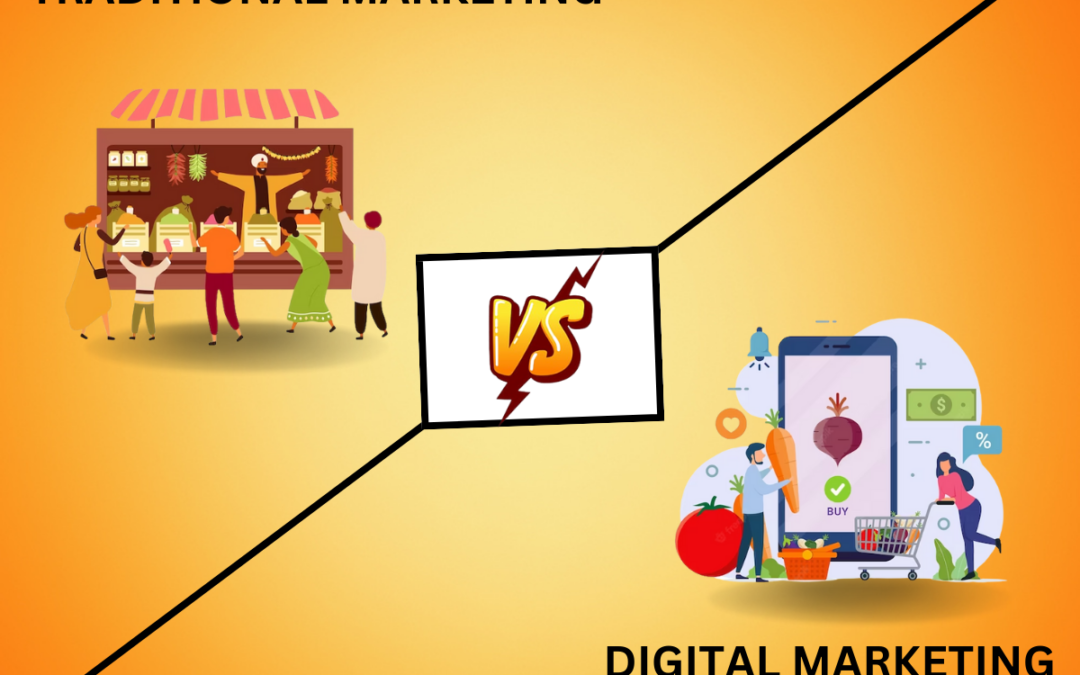Marketing has always been a crucial aspect of business growth and success. In the past, traditional marketing methods such as print ads, billboards, and television commercials dominated the industry. However, with the rise of the internet and technology, digital marketing has emerged as a viable alternative. In this blog, we will discuss the differences between traditional marketing and digital marketing.
Reach
Traditional marketing methods are typically limited in their reach, as they target a specific audience within a particular geographic location. For example, a billboard advertisement will only reach people who drive past it, while a print ad in a local newspaper will only reach readers of that publication. Digital marketing, on the other hand, can reach a vast and diverse audience across different locations, thanks to the global reach of the internet.
Cost
Traditional marketing methods can be expensive, especially for small businesses with limited budgets. For example, a television commercial can cost thousands of dollars for a short spot. In contrast, digital marketing is often more cost-effective and can provide a higher return on investment (ROI). Social media platforms like Facebook and Instagram offer affordable advertising options that allow businesses to target specific audiences based on demographics, interests, and behavior.
Tracking and Analytics
One of the most significant advantages of digital marketing over traditional marketing is the ability to track and analyze performance accurately. With digital marketing, businesses can collect and analyze data in real time, providing valuable insights into customer behavior and campaign performance. In contrast, traditional marketing methods are more challenging to track and analyze accurately, making it difficult to determine the effectiveness of a particular campaign.
customers in real-time, respond to their inquiries and receive feedback. This level of interactivity and engagement can help build trust and loyalty among customers, which is essential for long-term business success.
Personalization
Digital marketing allows businesses to personalize their marketing efforts to target specific audiences better. For example, email marketing campaigns can be tailored to individual customers based on their past purchases or behavior. This level of personalization can increase engagement and conversion rates, resulting in a higher ROI. Traditional marketing methods, on the other hand, are often more generalized and may not be as effective in targeting specific audiences.
Timing
Traditional marketing methods require a more extended lead time than digital marketing to create and launch campaigns. For example, producing a television commercial requires pre-production, filming, and post-production processes, which can take weeks or even months. In contrast, digital marketing campaigns can be launched quickly and easily, allowing businesses to respond to market changes and trends in real time.
In conclusion, traditional marketing and digital marketing each have their unique advantages and disadvantages. While traditional marketing methods have been around for decades and can still be effective in certain situations, digital marketing offers a more cost-effective, targeted, and measurable approach to marketing that can help businesses reach a wider audience, build engagement and loyalty, and ultimately grow their business

